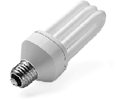Updated December 2009
[See printable PDF of this fact sheet]
Where Our Energy Comes From
The U.S. has 4.6% of the world’s population,1but uses 25% of the world’s oil, gas and electricity.2 Annual U.S. energy demand is 100 quads (quadrillion btus).3 39% of this energy use is electricity, 33% is heating fuels and 28% is the transportation sector.4
Our electricity comes from: coal (48%), nuclear (19.3%), natural gas (21%), hydroelectric (6%) and oil (1.6%). The remaining 4.1% comes from wood and waste burning, wind, solar, geothermal, and other minor sources.5
Oil plays a very minor role in electricity production, but is the primary fuel (96%) in the transportation sector. Fuels used for transportation and heating in the U.S. are oil (37%), natural gas (48%) and coal (7%). Oil is used to meet 40% of our total energy use (transportation, heating and electricity combined). Coal and Natural gas each provide 22.5%.6
66% of the oil we use is imported. 49% of our oil imports come from the Americas (mostly Mexico, Canada and Venezuela). 16% of our imports come from the Persian Gulf; 18% is from Africa (mostly Nigeria).7 97% of natural gas comes from the U.S. and Canada via pipelines, but now that we’re starting to run short of gas in North America, there are over 60 proposals for liquefied natural gas import terminals, which would increase our dependence on foreign sources of natural gas, just as with oil.8
Plans for More Dirty Energy
As of November 2007, there are plans for 120 new coalfired power plants in the U.S., at least 25 new nuclear reactors, two new oil refineries, 190 new ethanol biorefineries (most of which would be powered by mini-coal power plants), dozens of biomass incinerators, and around a dozen coal-to-oil refineries. All of these would cause serious harm to the environment. Grassroots community groups are rising up to fight off many of these proposals. Previous waves of dirty energy development have been stopped by grassroots activism, including 60-90% of the nuclear reactors, trash incinerators and natural gas power plants planned since the 1970s.
The Good News: We Don't Need Dirty Energy
A combination of conservation, efficiency, wind and solar can meet 100% of our energy needs. It’s technically and economically possible to do this and it can probably be done within 20 years. According to a January 2006 analysis by the Department of Energy’s National Renewable Energy Laboratory (NREL), the entire U.S. electricity demand could technically be met by renewable energy resources by 2020 and longer term, the potential of domestic renewable resources is huge – more than 85 times current U.S. energy use. Solar alone can provide 55 times our current energy use. Wind can provide 6 times our current energy use.9
Conservation and Efficiency

Currently our energy demand creeps up 1-2% each year.10 This trend can be reversed. Conservation and efficiency have huge potential to reduce demand.
The U.S. uses twice as much energy per person as Japan and Europe – countries with high standards of living. Cutting our energy use in half would make us as energy efficient as Japan and Europe.11
Business and industrial customers account for 63% of electric use12 and 79% of heating fuel use,13 so most of the demand reduction burden isn’t on the residential homeowner.14 Much can be saved by upgrading motors and lighting.
Government, industry and independent analyses have shown that cost-effective energy efficiency improvements could reduce electricity use by 27% to 75% of total national use within 10-20 years – without impacting quality of life or manufacturing output. This has been documented by the U.S. Congress, Office of Technology Assessment (1993, claiming 33% over 12 years);15 the Electric Power Research Institute (1990, claiming 27-44% over 10 years);16 and the Rocky Mountain Institute (1990, claiming 75% over 20 years).17
The need for heating fuels can be reduced through weatherization and geothermal heat pumps, which use the relatively constant temperature of the earth to provide heating and cooling. Geothermal can reduce energy used for heating and cooling by 30-60%. 18
In the transportation sector, overall fuel economy for cars and light trucks in the U.S. market reached its highest level in 1987, when manufacturers managed 22.1 mpg. The average in 2004 was 20.8 mpg. Using hybrid technology, this average can be doubled by 2015. The Union of Concerned Scientists calls for increasing fuel economy to 40 mpg by 2015 and 55mpg by 2025.19
Wind Power

Since 1993, the Department of Energy has published data showing that wind power can provide more power than the entire nation’s electricity needs.20 The plains states have been called the Saudi Arabia of wind. North and South Dakota alone have enough wind energy from its highest wind speed sites to supply over half of the nation’s electricity needs.21
In the past 20 years, wind technology has come a longway. The cost has dropped dramatically and continues to drop as more wind turbines are mass produced. Wind is already cost-competitive with coal and natural gas in some parts of the country.
Off-shore wind energy also has great potential. A 2005 Department of Energy study shows that almost 70% of U.S. electricity use can be met with off-shore wind-power within 50 miles of the U.S. coastline.22
In 2005, researchers at Stanford University published a study showing that there is enough wind power available on each continent to meet one and a half times the entire world’s energy needs.23
Many have expressed concern about bird kills from wind turbines. Wind turbines kill an average of about two birds per turbine per year. To put this in perspective, the U.S. could get half its electricity from wind power and the bird fatalities would be less than 1% of the number of birds housecats kill each year.24 At sites in PA and WV, however, large numbers of bats have been killed by wind turbines. The industry is working to figure out how to prevent this.
Solar Power

Solar can be used in many ways. Passive solar can be used by designing new homes and buildings to take advantage of natural sunlight. Energy used to heat water can be reduced through solar hot water heating. Solar thermal technologies can be used to concentrate sunlight to heat water and make electricity. Carbon taxes could potentially make it cost effective to use concentrated solar for energy intensive industries like cement manufacturing so that they don’t need to burn coal or wastes.25 Commercial-scale concentrating solar power facilities are becoming economically competitive; facilities over 10 megawatts are coming in at 11 cents/kwh, and is projected to go down to less than 6 cents,26 making it cheaper than current residential and commercial electricity rates.27
When most people think of solar power, they think of photovoltaic (PV) solar panels, which produce electricity from sunlight. The Department of Energy estimates that a distributed solar system sufficient to meet the entire U.S. electricity demand would require an average of 17 square miles of PV per state.28 Using vacant land, parking lots and rooftops would provide enough land for this. Using just the estimated five million acres of abandoned industrial “brownfields” sites in our nation's cities could supply 90% of America's current electric demand.29
PV is still quite costly, but costs are dropping rapidly
as demand increases, largely thanks to state-based
renewable energy incentives, like those in NJ and CA.
What About When the Wind Isn't Blowing...
What about when the wind isn't blowing and the sun isn't shining? A 2005 study by the International Energy Agency found that wind power, spread across a wide enough area, connected to the regional electric grids, can provide stable, predictable amounts of electricity.30 Also, off-shore wind power is more regularly available and can provide the regular “baseload” sort of power that fossil fuels and nuclear power are used for. As we approach high percentages of electricity produced from wind and solar, energy storage methods will become necessary.
Hydrogen for Energy Storage
When there is excess wind and solar power, that power can be used to electrolyze water, turning it into hydrogen and oxygen. That hydrogen can be stored and when power is needed, it can be used to produce electricity, while turning hydrogen back into water. Grid-tied fuel cells make it possible to rely entirely on “intermittent” technologies like wind and solar. Other strategies, including fly wheels, supercapacitors,31 compressed air, or (electric) vehicle-to-grid systems may emerge as winners once we get to the point where we have to worry about over-reliance on intermittent generation sources.32
Alternative Transportation/Heating Fuels
Currently, there are many schemes for producing alternative fuels. Unfortunately, none of them are available in large enough quantities to replace oil and gas. Also, if used on a mass scale, they all involve serious environmental harms, whether we’re talking about coal-based liquid fuels,33 ethanol,34 biodiesel (80% is from biotech soy)35 or waste-based fuels.36
Hydrogen is no alternative fuel, since it’s not an energy source, but an energy carrier. It makes no sense to convert electricity to hydrogen only to turn it back into electricity in fuel cell vehicles.37 Energy can be saved – and a complex and expensive hydrogen fueling infrastructure can be avoided – by using electricity directly with plug-in hybrid electric cars.38
The use of combustible fuels in transportation can be eliminated with the use of electric cars (and plug-in hybrids in near term), using wind-powered electricity, at a cost less than $1/gallon gasoline equivalent.
For the next 10-20 years, money for “alternative” fuels should instead be focused on conservation and efficiency tactics, including hybrids and public transit improvements. Ultimately, cars should be run on clean electricity, avoiding all forms of combustion.
|
|
